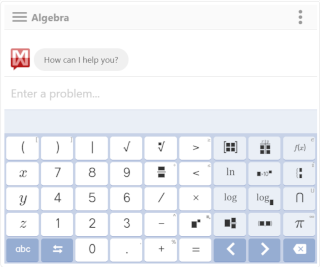Evaluate Expressions (Grade 6)
Related Topics:
Lesson Plans and Worksheets for Grade 6
Lesson Plans and Worksheets for all Grades
More Lessons for Grade 6
Common Core For Grade 6
Examples, solutions, videos, and lessons to help Grade 6 students learn to write, read, and evaluate expressions in which letters stand for numbers.
A. Write expressions that record operations with numbers and with letters standing for numbers. *For example, express the calculation “Subtract y from 5” as 5 – y
B. Identify parts of an expression using mathematical terms (sum, term, product, factor, quotient, coefficient); view one or more parts of an expression as a single entity. For example, describe the expression 2 (8 + 7) as a product of two factors; view (8 + 7) as both a single entity and a sum of two terms.
C. Evaluate expressions at specific values of their variables. Include expressions that arise from formulas used in real-world problems. Perform arithmetic operations, including those involving whole-number exponents, in the conventional order when there are no parentheses to specify a particular order (Order of Operations). For example, use the formulas V = s3 and A = 6 s2 to find the volume and surface area of a cube with sides of length s = 1/2.
Common Core: 6.EE.2
Suggested Learning Targets
- I can write expressions.
- I can use expressions to with common formulas.
- I can evaluate expression with the order of operations.
- I can use numbers and variables to evaluate expressions.
- I can translate written phrases into algebraic expressions.
- I can translate algebraic expressions into written phrases.
- I can identify parts of an expression using mathematical terms (sum, term, product, factor, quotient, coefficient).
- I can identify parts of an expression as a single entity, even if not a monomial.
- I can substitute specific values for variables.
- I can evaluate algebraic expressions including those that arise from real-world problems.
- I can apply order of operations when there are no parentheses for expressions that include whole number exponents.
Write, read, and evaluate expressions in which letters stand for numbers (6.EE.2a)
Writing Expressions (6.EE.2)
Turning Words into Math
Examples:
- Add t and 7
- The sum of 4 and 3x
- Subtract 8 from r
- 8 less than 2r
- The product of 3 and x
Multi-step examples:
- 4 less than the product of 3 and t
- The sum of a and the product of 6 and y
6.EE.2.a - From Words to Expressions (Less than and Difference)
Translate from words to algebraic expressions.
Examples:
- What is nine less than seven times a number m as an expression?
- Write five times the difference of 6 and a number x as an expression.
Identifying Parts of Expressions (6.EE 2)
Term: A part of an expression, a number, variable (or numbers and variables multiplies by each other) separated by addition of subtraction from other terms.
Coefficient: The number multiplied by a variable.
Evaluating Expressions and Order of Operations (6.EE.2)
Examples:
- Evaluate 3x for x = 5.
- Evaluate 100 - 2b2 for b = 3.
- Evaluate 3(2a - 3) for a = 9.
Using formulas to evaluate.
Example:
V = lwh Find the volume of 5 of these rectangular prisms that each have l = 3 cm, w = 2 cm and h = 4 cm.
Try the free Mathway calculator and
problem solver below to practice various math topics. Try the given examples, or type in your own
problem and check your answer with the step-by-step explanations.

We welcome your feedback, comments and questions about this site or page. Please submit your feedback or enquiries via our Feedback page.